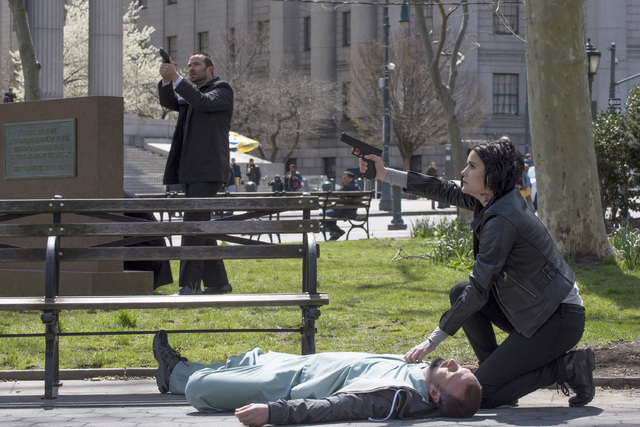Violence and TV — a nightmare for America

Minnie Mistretta has two simple questions.
How does the bombardment of violence on TV and in other forms of media help American society?
Does the infatuation with violence by media companies hurt the country?
As the 74-year-old retired fashion designer — she now describes herself as “a concerned citizen” — sat in her Henderson home recently, she was more than happy to answer the questions herself.
Sure, she said, crude formulaic violence in media helps the bottom line of multibillion-dollar media companies, making shareholders happy and millionaires of actors who look good cracking heads and firing guns.
But other than that, she couldn’t think of anything else.
Come to think of it, I can’t either.
Yes, I watch some of it, often because a book I picked up didn’t deliver, but the truth is if there were more TV shows where a violent death isn’t seen or talked about — no, reality shows aren’t my cup of tea — I’d probably watch them.
Hey, I used to like to watch Dr. House use his cranial activity to help people escape from a deadly disease every week.
I often tend to agree with Mistretta, who frequently shares her opinions with me via mail. In fact, as my wife and I click through channels, we frequently remark on all the TV shows where violent death or rape often follows a simple formula.
There’s a crime of the week where the titillation of violent scenarios captures viewer attention even more than a bad car wreck. A bloody gunshot victim lies lifeless. Or an assault victim is terrorized into the shakes. Or there are pedophiles and serial killers on the loose who each leave a forensic trace.
Then dudes and dudettes get interrogated and cops chase down some false leads while digging up more clues, often through scumbags they may have to rough up just a tad.
Then the real scumbag is found, perhaps rubbed out with flair, and we’re all supposed to take away some sort of lesson — like always carry a gun on you while awake or asleep, even in the shower or on the throne, because there are real-life monsters out there.
Mistretta is sure that children who watch violence become more aggressive.
She’s right, of course.
Way back in 1961 psychologist Albert Bandura showed us that with his “Bobo doll” experiment. Kids saw an adult beating on the doll. And then when the kids were released into a room with a Bobo doll, guess what? They beat on the doll. Kids who didn’t see adults hitting the doll were far less likely to punch out the doll.
Since then there had been studies ad nauseam that prove the same thing — kids become more aggressive and more callous toward victims of crime. They also have an exaggerated fear of violence.
Who’s come out against children watching violent portrayals over the last 55 years? Well, to name just a few: The U.S. Surgeon General, the National Institutes of Mental Health, the National Academy of Sciences, the American Medical Association, the American Psychological Association, the American Academy of Pediatrics, and Parents Television Council.
And what’s happened? The chance for kids to now see violence on TV and in video games — too few parents actually monitor what their children watch — is better than ever before.
In fact, a study reported by the American Psychological Association in the last decade found that 60 percent of 10,000 programs sampled contained violent material, with 6,000 violent interactions in a single week of programing. More than 50 percent of the violent shows had lethal acts, and a quarter of the shows depicted the use of a gun.
Now keep in mind Mistretta is completely against censorship even though she believes the entertainment industry has a lot to do with kids becoming so desensitized and so addicted to violence that they’ll pick up a gun and start shooting as they did at Columbine and on city streets.
She says she just wants media titans to do the right thing and offer more nonviolent shows and tone down others.
But she knows that’s a pipe dream.
“The money’s just too good,” Mistretta said. “Nothing will change.”
Paul Harasim’s column runs Sunday, Tuesday and Friday in the Nevada section and Monday in the Health section. Contact him at pharasim@reviewjournal.com or 702-387-5273. Follow @paulharasim on Twitter.